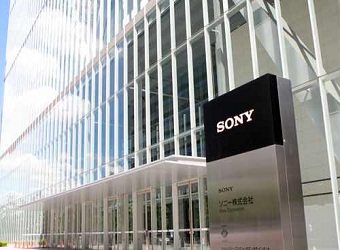Japan’s Sony Corp lifted its full-year operating income forecast on Tuesday, expecting to book its highest-ever profit due to strong sales of image sensors used in smartphones and other devices.
The electronics firm forecast profit of 630 billion yen ($5.57 billion) for the year ending March, from 500 billion yen estimated three months ago.
Meeting the new forecast would mean Sony exceeding its previous record of 526 billion yen set in the year ended March 1998, when strong sales of consumer electronics including its first PlayStation games console coincided with its box-office hit “Men in Black”.
The new outlook compared with a Thomson Reuters Starmine SmartEstimate of 585.81 billion yen drawn from the views of 26 analysts.
Sony also said profit for July-September jumped to 204.2 billion yen from 45.7 billion yen a year earlier. The result is higher than the 140.49 billion yen average estimate of 11 analysts.
The semiconductor division, which include sensors, is forecast to post profit of 150 billion yen, up 20 billion yen from an earlier estimate and a reversal from last year’s loss, as it recovered from earthquake damage sustained a year ago.
A business overhaul refocusing on image sensors and games under Chief Executive Officer Kazuo Hirai has moved Sony out of a decade of doldrums and boosted the firm’s stock price to nine-year highs.
But the stock price has plateaued in recent months as investors have become skeptical about Sony’s growth potential in coming years, when a profit boost from the earthquake recovery disappears and the PlayStation 4 console enters the late stage of its life cycle.
Hoping to grow future profit pillars, Sony has been boosting investment in artificial intelligence to catch up with U.S. tech giants such as Amazon Inc and Alphabet Inc’s Google.
Sony this month unveiled its Xperia Hello! voice-activated communication robot. It is also widely expected to revive robotic pets, similar to robotic dog AIBO that went on sale in 1999.
It is also aiming to lead the budding virtual-reality (VR) market by gelling with the content portion of the group’s business such as music and film.
In sensors, the business is trying to crack into the lucrative automotive market, where demand for sensors is rising as an increasing number of cars are mounted with autonomous driving functions based on sensing technologies. Source: Reuters
Source: Reuters



